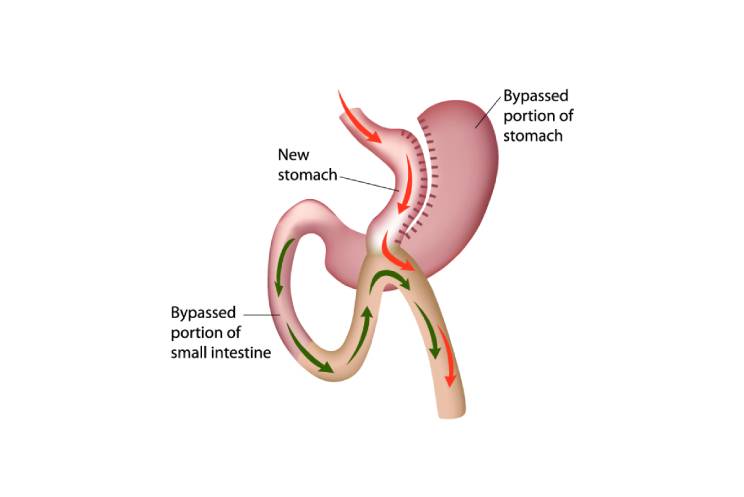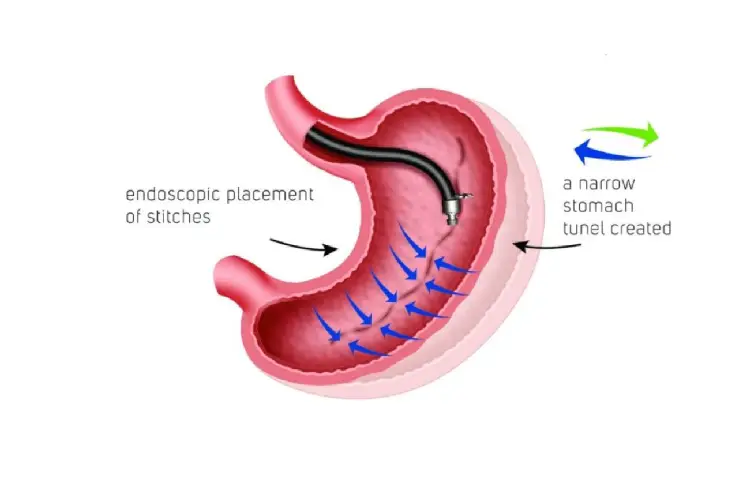Guide to types of weight-loss surgery
Bariatric surgery helps you lose weight and reduces your risk of medical problems linked with being obese. Bariatric surgery contributes to weight loss by Restriction and Malabsorption. In restriction, surgery is used to physically limit the amount of food the stomach can hold, which limits the number of calories you can eat, while in malabsorption, Surgery is used to shorten or bypass part of the small intestine, which reduces the number of calories and nutrients the body absorbs. However here are some types of weight-loss surgery.
Sleeve gastrectomy
In a sleeve gastrectomy, a section of the stomach is isolated and removed from the body. The remaining portion of the stomach is molded into a tube-like shape. This smaller stomach cannot take as much food. It also gives less of the appetite-regulating hormone ghrelin, which may reduce your desire to eat. However, sleeve gastrectomy does not alter the absorption of calories and nutrients in the intestines.
Roux-en-Y gastric bypass
In the Roux-en-Y gastric bypass, the doctor creates a small pouch at the tip of the stomach. The sack is the only part of the stomach that holds food. This significantly limits the amount that you can conveniently eat and drink at one time. The small intestine is then pierced a little distance beneath the main stomach and connected to the new pouch. Food flows straight from the pouch into this part of the intestine. The foremost part of the stomach, however, continues to make digestive juices. The part of the intestine still connected to the main stomach is reattached farther down. This provides the digestive juices to flow to the small intestine. The food now bypasses a portion of the small intestine, some nutrients and calories are engrossed.
Laparoscopic flexible gastric banding
In the laparoscopic flexible gastric banding operation, a band holding an inflatable balloon is placed around the upper part of the stomach and fixed in place. This forms a small stomach sack above the band with a very small hole to the rest of the stomach. A port is then placed beneath the skin of the belly. A tube joins the port to the band. By injecting or extracting fluid through the port, the balloon can be inflated or deflated to adjust the size of the band. Gastric banding reduces the amount of food that your stomach can hold, so you feel full quickly, but it doesn’t reduce the ingestion of calories and nutrients.
Biliopancreatic diversion with duodenal switch
As with sleeve gastrectomy, these operations begin with the surgeon isolating a large part of the stomach. The valve that delivers food to the small intestine is left, along with the first part of the small intestine, called the duodenum. The surgeon then closes off the mid-section of the intestine and attaches the last part straight to the duodenum. This is the duodenal switch. The isolated section of the intestine isn’t separated from the body. Instead, it’s joined to the end of the intestine, enabling bile and pancreatic digestive juices to flow into this part of the intestine. This is the biliopancreatic alteration. As a result of these changes, food circumvents most of the small intestine, restricting the intake of calories and nutrients. This, together with the miniature size of the stomach, leads to weight loss.
Gastric Balloon/Intragastric Balloon System
An intragastric balloon is a type of limiting weight loss surgery in which a flattened balloon is placed in the stomach (through the mouth). Once in place, it is filled with a saline solution that gives a sense of fullness, thereby controlling hunger. The intragastric balloon is not advisable for people who’ve had weight loss surgery or who have bowel disease or liver failure.
In Conclusion, weight loss surgery is a serious surgical operation that decreases the size of the stomach, reduces food intake and can enable you to lose a notable amount of weight. It is a permanent procedure that needs a lifetime devotion to maintaining a healthy lifestyle. Bariatric surgery not only helps you to shed weight but can help improve your total health, well-being, and morale
Best practice is to let a medical professional prescribe the best option for you after review of your medical history. Fill out this bariatric health questionnaire to get a response from a surgeon staffed by Lighter Dream as to what is best for you.
https://www.mayoclinic.org/tests-procedures/gastric-bypass-surgery/in-depth/weight-loss-surgery/art-20045334
https://www.mayoclinic.org/tests-procedures/gastric-bypass-surgery/in-depth/weight-loss-surgery/art-20045334
https://www.webmd.com/diet/obesity/weight-loss-surgery-making-the-choice
https://www.dranbara.com/en/weight-loss-surgery
https://www.montefiore.org/body.cfm?id=1738&action=detail&ref=975
This entry was posted in Post-Op, Pre-Op and tagged balloon, bariatric surgery, duodenal switch, gastric bypass, gastric sleeve, lapband. Bookmark the permalink.






